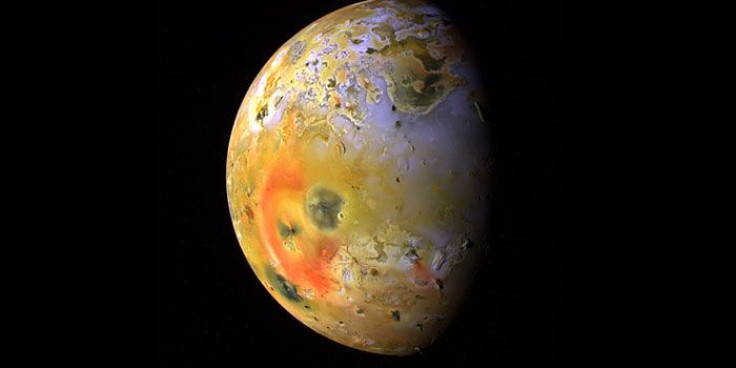Volcanoes On Jupiter’s Moon Io Make Auroras, Not Sun’s Electric Storms

The swirling colors called auroras that dance in Earth’s atmosphere are famous but they are not even the best light show in the solar system. Jupiter has auroras much more powerful than our planet, and scientists have finally figured out why that is: moon volcanoes.
On Earth, auroras sprout when the sun blows electrically charged particles toward us — the solar wind — and those particles interact with the gases in the planet’s atmosphere to create colors. Those colorful streams move based on how they hit Earth’s magnetic fields, to create the shapes we see. The solar storm that leads to auroras here, also known as northern lights, has the same effect on Jupiter when the charged particles are blown in that direction. But it was a mystery why Jupiter’s auroras can be so much more intense.
Read: Auroras Light Up Uranus
To crack the case, scientists used observations of the brightest auroras and of Jupiter’s neighborhood from NASA’s Juno spacecraft, the Hubble Space Telescope and a Japanese satellite called Hisaki, finding that it’s volcanoes on its moon Io that make the difference. According to the RIKEN Nishina Center for Accelerator-Based Science, which is in Japan, those volcanoes “are responsible for powering some of Jupiter’s brightest auroral features through interactions with the shock wave caused by the arrival of the solar wind.”
Io has the most volcanic activity of anywhere in the solar system. NASA says it has “hundreds of volcanoes, some erupting lava fountains dozens of miles (or kilometers) high.” For such tremendous volcanic activity, Io is not even that large — just a tad bigger than Earth’s moon.

Using the three spacecraft, RIKEN followed sulfur gas that erupted from Io volcanoes as it headed toward Jupiter at between 250 and 500 miles per second and contributed to the auroras near its poles. The energy was moving from a place far away from Jupiter and heading right toward it.
“Juno detected a shock wave originating from the solar wind, and this led us to infer that the solar wind was, along with Io, playing a role in the process by driving the energy toward Jupiter,” Tomoki Kimura, lead author of the related study in the journal Geophysical Research Letters, said in the RIKEN statement.
Read: Jupiter’s Great Red Spot is Shrinking
The observations don’t just help scientists better understand how the Jovian system operates to create auroras, they also have potential implications in the search for alien life in our solar system. According to RIKEN, based on how the energy from Io accelerated toward the gas giant Jupiter, the findings challenge the idea that the “magnetic field of a rotating astronomical body is powerful enough to completely dominate … movements of energy and mass.”
Other moons around Jupiter, including Europa and Ganymede, have icy surfaces covering liquid water oceans that astronomers hope might harbor extraterrestrials, and Kimura explained that “the energy driven from the far area toward Jupiter could provide support for chemical processes on the icy surface of the moons.”
His team will continue using the Juno spacecraft, which is orbiting Jupiter, to learn more about how that energy transfer between the planet and its moons occurs.
© Copyright IBTimes 2024. All rights reserved.











